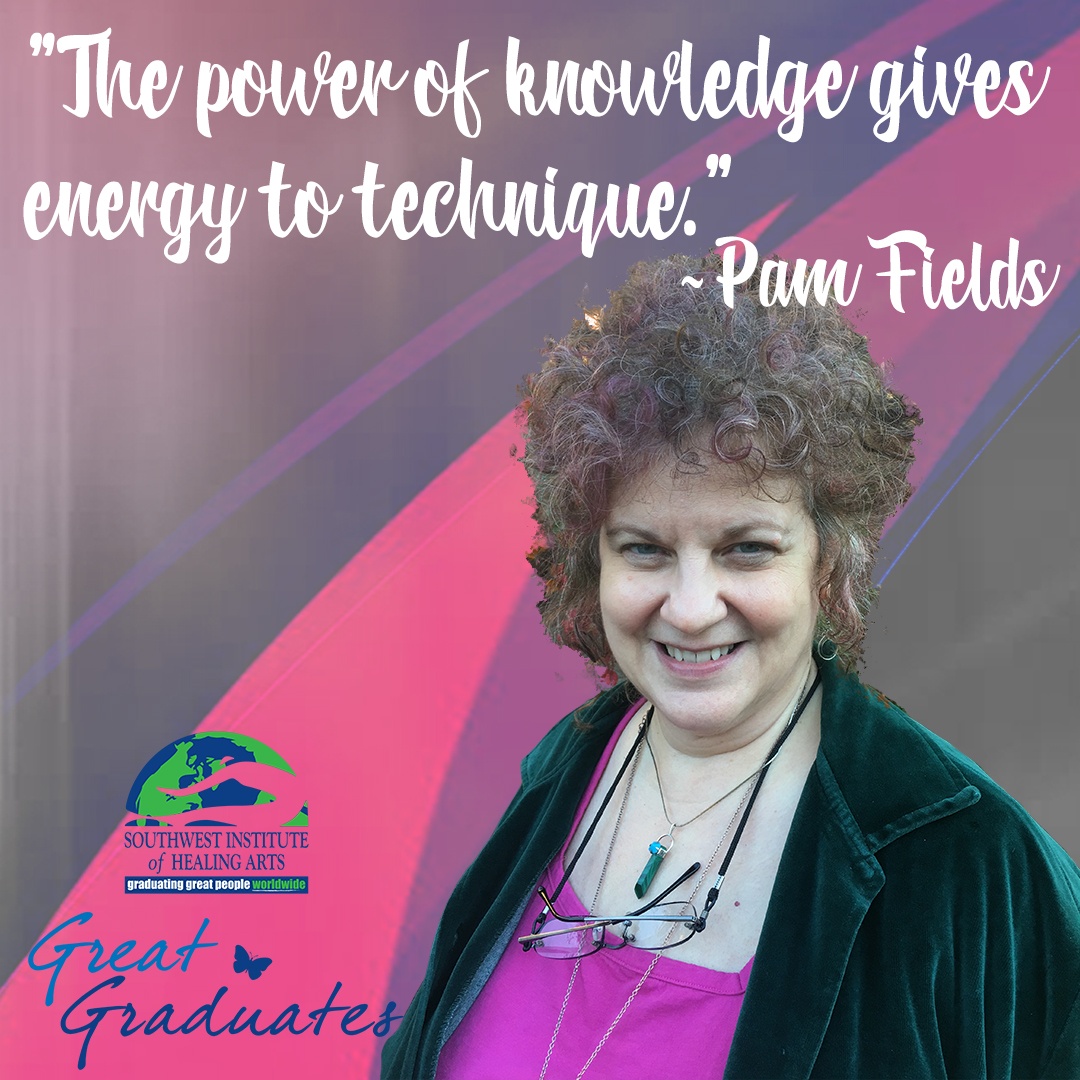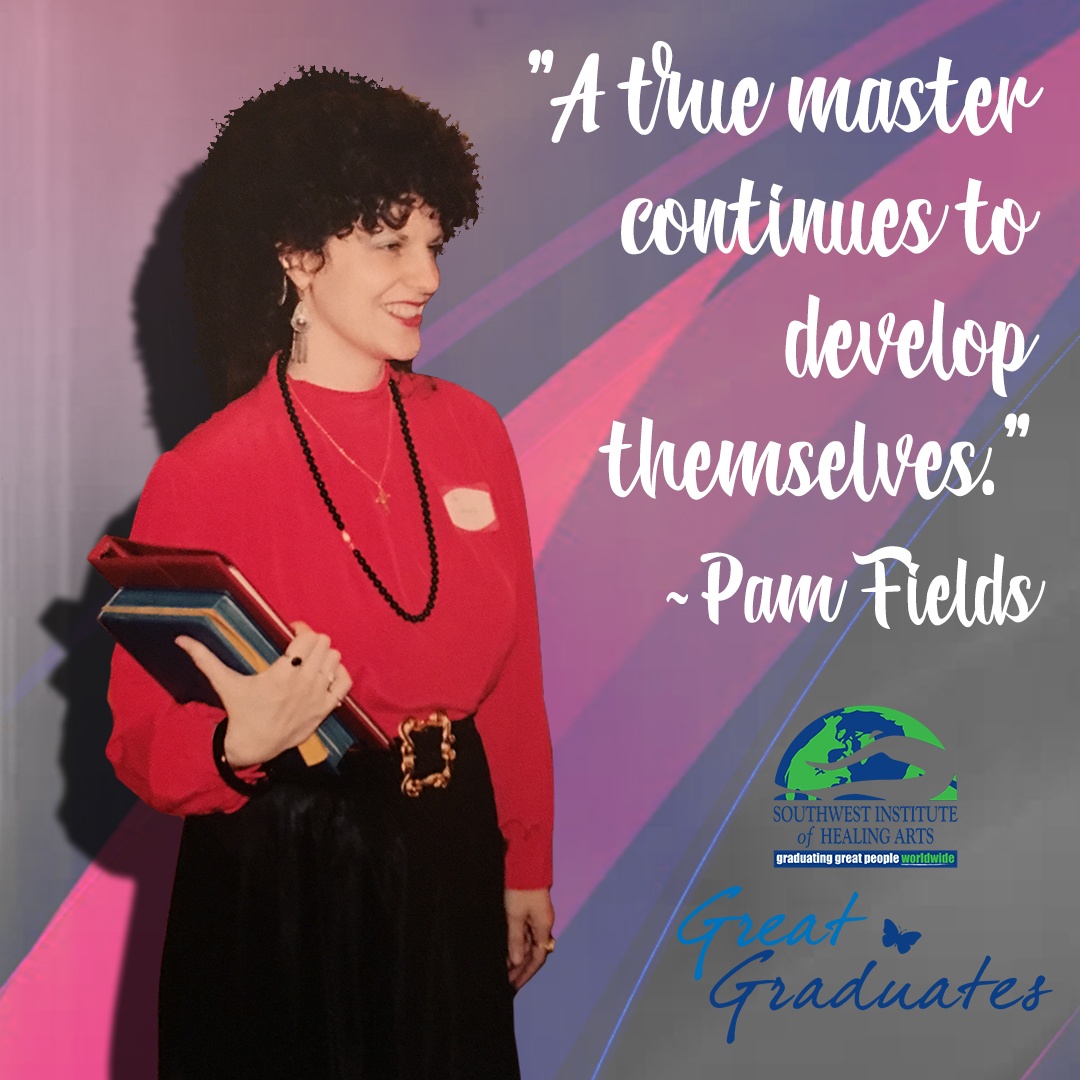When Pam Field moved to Phoenix, Arizona in 1999, she was determined to do one thing: bring science to the art of massage. While she already has a Bachelor of Science in Nursing and had taught at a massage therapy school in Kansas City, Missouri, for 17 years, she was on the hunt for a new school—one that could help build on her current knowledge base to further refine her technique and teach her new information.

“When I found SWIHA, I was delighted at the quality and diversity of classes that it offered,” she discloses. “The school was forwarding-thinking when it came to health education.” As it would turn out, SWIHA had an equal appreciation for what Pam brought to the massage table, and she was asked to come on board as an instructor. Now, after 33 years of work and study, Pam teaches the Myofascial Energetic Massage program at SWIHA—and she’s still focused more than ever on making the myofascial approach as effective as possible. “I believe I can make my intent more appropriate in the executing of technique,” she says. “Intent causes the energy to flow toward the goal of the work.”
What is Myofascial Release?
 For those unfamiliar with the practice, the myofascial approach to massage therapy involves treating the fascia, the densely interwoven system of connective tissue which covers and stabilizes our bones, muscles, nerves, and organs.
For those unfamiliar with the practice, the myofascial approach to massage therapy involves treating the fascia, the densely interwoven system of connective tissue which covers and stabilizes our bones, muscles, nerves, and organs.
On their website, the Myofascial Release Treatment Centers and Seminars describes how pain can develop as a result of the normally relaxed and unrestricted fascia experiencing tension:
“When one experiences physical trauma, emotional trauma, scarring, or inflammation… the fascia loses its pliability. It becomes tight, restricted, and a source of tension to the rest of the body. Trauma, such as a fall, car accident, whiplash, surgery or just habitual poor posture and repetitive stress injuries has cumulative effects on the body. The changes trauma causes in the fascial system influences comfort and function of our body. Fascial restrictions can exert excessive pressure causing all kinds of symptoms producing pain, headaches or restriction of motion. Fascial restrictions affect our flexibility and stability, and are a determining factor in our ability to withstand stress and perform daily activities.”
Freedom from Pain
So what results from aggravation of the fascia which is left untreated is, quite simply, a cycle of pain that can grow and dramatically impact the body’s wellbeing.
In fact, one of the most meaningful experiences Pam has had with a student involved dealing with this kind of spiraling chronic pain. Pam was demonstrating a technique to relieve a torqued sacrum; upon performing the technique, the student serving as the demo client was released from the pain that had been afflicting them for two years. As amazing enough as this was on its own, Pam was reunited with that student three years later, when they returned to take another SWIHA class… and was still living pain-free after all that time!
 While alleviating the pain of others is gratifying, Pam says that the true motivation behind her instructional style is to empower others to do the work themselves. “My impact on students is to assist them to open up to their talent and learn to be their own teacher,” she shares. “A true master continues to develop themselves. I support them in this. I enjoy looking for the divine in them, and I encourage students to connect to their divine nature.”
While alleviating the pain of others is gratifying, Pam says that the true motivation behind her instructional style is to empower others to do the work themselves. “My impact on students is to assist them to open up to their talent and learn to be their own teacher,” she shares. “A true master continues to develop themselves. I support them in this. I enjoy looking for the divine in them, and I encourage students to connect to their divine nature.”
“By being a teacher, I have learned to be humble and grateful for the divine unfolding of truth and growth in students,” she goes on to explain. “I feel honored to be a part of this process. The power of knowledge gives energy to technique.”
Pam feels that it is the strength of her communication, observation skills, empathy, and intuition that helps her be so effective in teaching myofascial release to students of all styles of learning. Anyone who knows Pam also knows that her sense of humor, fun, and flair for the dramatic also helps students remember what they need to know to be effective practitioners! Her advice to future students is to stay interested in and passionate about their work. “Stay positive,” she proclaims. “Work toward being the best at what you want to be!”


